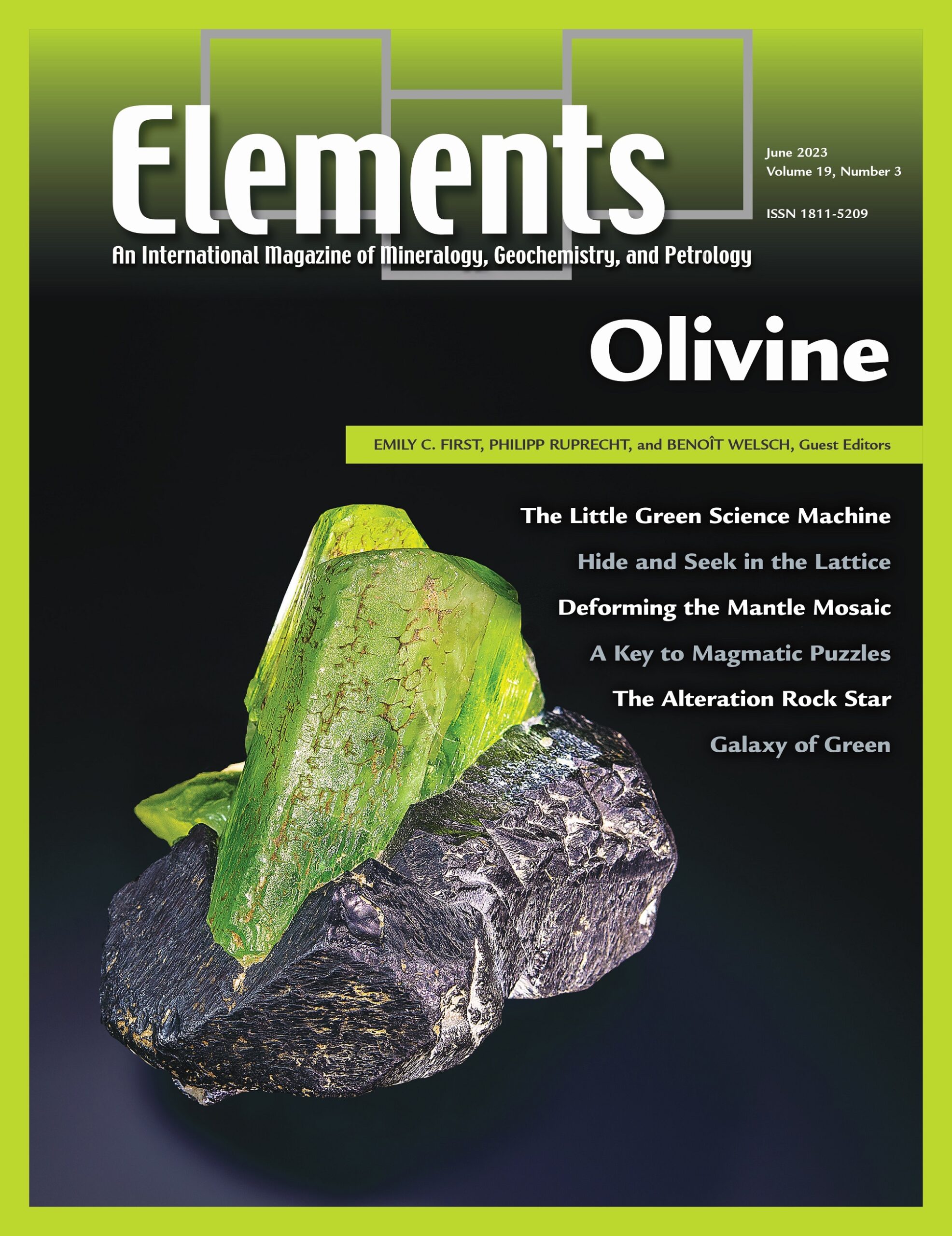
Cascadia Subduction Zone, August 2022, Vol. 18, No. 4
June 28, 2024
Biomagnetism, August 2023, Vol. 19, No. 4
June 28, 2024Olivine, June 2023, Vol. 19, No. 3
$20.00
To study the Earth and other planetary bodies, one has to understand the mineral olivine; when and where it forms, how it crystallizes and deforms, and how it responds to changing environmental conditions in the Earth’s interior, on the surface, and in space. This issue takes a look at olivine research from the atomic scale to the Solar System and beyond.
Olivine
June 2023, Vol. 19, No. 3
To study the Earth and other planetary bodies, one has to understand the mineral olivine; when and where it forms, how it crystallizes and deforms, and how it responds to changing environmental conditions in the Earth’s interior, on the surface, and in space. This issue takes a look at olivine research from the atomic scale to the Solar System and beyond. Olivine plays a critical role for plate tectonics, magma transport from mantle sources to the surface, how the Solar System differentiated and evolved, and also for the efforts addressing climate change through carbon capture and storage. This issue highlights olivine research that crosses many disciplines, from seismology and geodynamics, petrology and volcanology to low-temperature geochemistry and remote sensing.
Why You’ll Love Elements Magazine:
- Expert Contributors: Articles written by renowned researchers in the field of geoscience.
- Engaging Content: Join a community of readers who are passionate about Elements.
- Exceptional Quality: Each issue is printed on high-quality paper with stunning visuals and detailed illustrations that bring complex scientific concepts to life.
Order your copy of the June 2023 issue of Elements magazine today and explore olivine.
Related products
-
Toxic Metals In The Environment: The Role Of Surfaces, September 2005, Vol. 1, No. 4
$20.00Metals are prevalent in the environment. They are derived from both natural and anthropogenic sources.
-
Glasses And Melts: Linking Geochemistry And Materials Science, October 2006, Vol. 2, No. 5
$20.00Geological interest in studying melts stems from early recognition that melts play a fundamental role in determining the physical and chemical behaviour of magmas and magmatic processes. However, due to the inherent difficulties associated with working at high temperatures, much of the geological research over the last 30 years has used quenched melts or glasses as proxies for melts themselves.
-
Supervolcanoes, February 2008, Vol. 4, No. 1
$20.00Explosive super-eruptions from large volume, shallow magma systems lead to enormous and devastating pyroclastic flows, the formation of gigantic collapse calderas, and deposition of volcanic ash over continent-sized areas. Recognition that future eruptions from these “supervolcanoes” will undoubtedly have severe impacts on society—and perhaps on life itself—has led to recent public and media interest.




